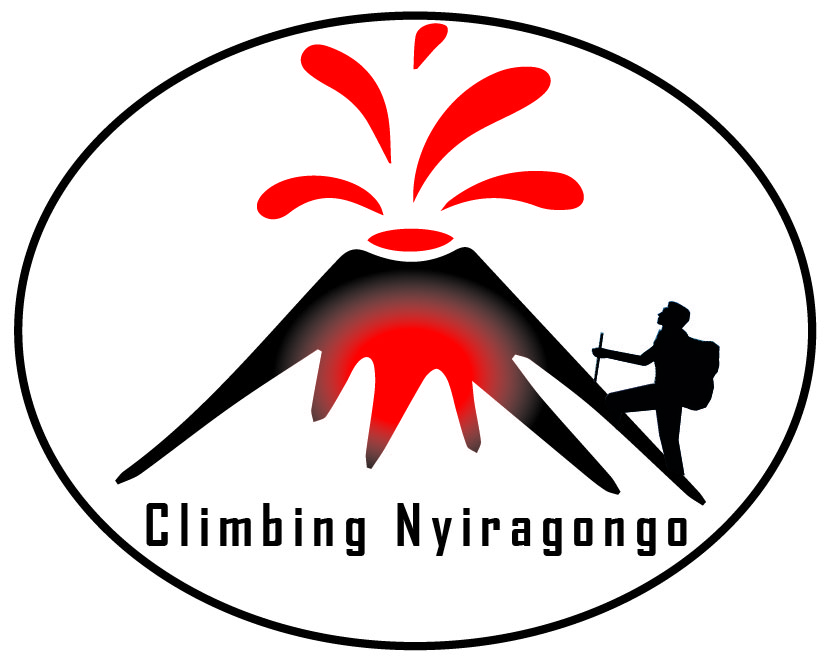Best time to visit Virunga – Recommended time to climb Mount Nyiragongo
Among the top frequently asked Questions is When is the best time of year to climb Nyiragongo Volcano?
The best recommended time to climb Nyiragongo are the dry months of December to mid-March and mid-June to the end of October, as these months are when the weather conditions are at their best. Clear skies, great views, little-to-no rain, and the sunshine.
However, there is always the possibility of weather changing dramatically, regardless of the season.
You can climb Nyiragongo at any time of the year, but certain months are better than others. We recommend best to climb Mount Nyiragongo during the driest months . We avoid April and November as these are the main rainy seasons, making the trails more dangerous.
Best time to summit nyiragongo volcano?
The best time to climb Nyiragongo volcano is during the dry season, which typically occurs from mid-December to February and from June to September. During these months, the weather is generally more stable, with lower chances of rainfall and clearer skies, providing better visibility of the surrounding landscapes and the lava lake within the volcano.
What is the best month to climb Nyiragongo? month by month overview
Unlike the Himalayas, Nyiragongo is never “closed”. You can trek year-round, but you need to be prepared. We do not normally offer climbs during April/May and November.
-
Climbing Nyiragongo in January and February to early March
Ideal trekking conditions with mostly dry, clear days, and good visibility. Occasional showers and a good chance of seeing the Lava Lake, making for some epic photo opportunities.

While this is considered “high season”, it’s often quieter on the slopes than the main climbing season of June to September, making it a good balance of not-too-crowded and decent weather.
Best for: Hikers who want to minimize crowds, whilst still having dry conditions.
-
Climbing Nyiragongo in March, April and May
Early March can be lovely, but as the month progresses, the rains can start to set in, making for muddy trails, cloudy skies, and poor visibility. In late March and late May, you can get lucky with some dry weather, but it’s a bit hit or miss.
April to early May are the long rains, and not suitable for climbing.
If your schedule dictates that you need to go during the shoulder seasons – late March and late May – you need to be prepared for wet weather, and not be disappointed by poor visibility.
Ideally, you’ll have some trekking experience already and won’t be phased by trickier trail conditions.
Best for: Experienced trekkers who want to avoid crowds, and who don’t mind unpredictable weather. We recommend the rainy season to explore Virunga national park as experts.
-
Climbing Nyiragongo in June/ July/ August and September
A combination of the best weather and the US and Europe summer vacations means this is the main climbing season and the busiest time on the mountain.July and August are the most popular months, so if you want to try and avoid crowds, opt for June or September, or October if you don’t mind a bit of rain.
Occasional showers are always possible, particularly in the forest, but it’s a predominantly dry time of year. Routes tend to be busier during this period, especially over the full moon.
Consider the following factors when planning your ascent:
Rainfall: The Democratic Republic of the Congo experiences heavy rainfall throughout the year, but the dry season offers a relatively lower chance of rain. This reduces the risk of encountering slippery and muddy trails, making the hike more manageable.
Visibility: Clear skies and reduced cloud cover during the dry season improve visibility, allowing you to enjoy panoramic views from the summit and witness the glowing lava lake more easily during the night.
Safety: Climbing a volcano involves some level of risk, and adverse weather conditions can exacerbate the challenges. Choosing the dry season reduces the chances of encountering heavy rains, thunderstorms, or other weather-related hazards during your ascent.
However, it’s important to note that weather patterns can vary, and even during the dry season, rainfall can occur unexpectedly. It’s always recommended to check the local weather forecast and consult with park authorities or tour operators who organize climbs to get the most up-to-date information and ensure your safety.
Keep in mind that Nyiragongo is an active volcano, and access to the summit may be restricted or closed during periods of increased volcanic activity. Always follow the guidance of local authorities and monitor any advisories or alerts related to volcanic activity before planning your climb.
Birds
With over 700 recorded bird species, here are some bird species you may encounter while birding around Nyiragongo
Rwenzori Turaco, Ruwenzori’ Nightjar, Handsome Francolin, Grauer’s Swamp Warbler, Yellow-eyed Black Flycatcher.
Your Congo Schedule
Depending on what you want to do before and after your climb – a Congo Gorilla safari or a Rwenzori Trekking perhaps – or simply when you can get time off work to travel, can inform your decision about when to climb.
Ultimately, apart from the really wet months, (April and November) there’s no “bad” time to climb Nyiragongo Nor is there a “perfect” time to climb. Weather conditions on any mountain can be unpredictable – that’s all part of the adventure.
